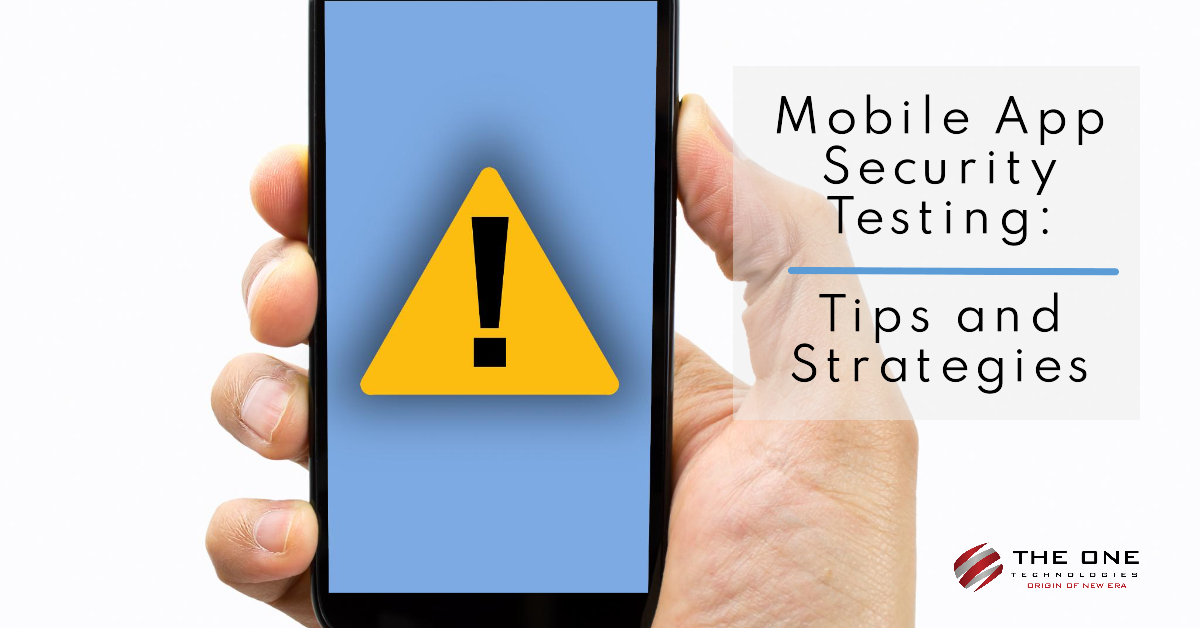Introduction
The mobile network has encouraged users to do almost all their financial, business, and social operations; hence, nearly all companies have launched their own mobile applications. These applications ease our routine transactions and are highly efficient. But data safety has always been a big concern.
In order to reduce the security risks of an application, developers must build an app that stands up to stringent security testing. Like functionality testing, security testing also requires in-depth application analysis and a well-defined strategy to carry out the actual testing. Fortunately, numerous tools stream and even automate these security tests.
So, to ensure the safety of your users and business, follow this exhaustive guide on ten security tips for your mobile app development that will help you identify and fix security vulnerabilities before the product is released. Let’s get started!
Tips for Mobile App Security Testing
Tip 1: Secure the backend
Numerous backend APIs consider that an app that has been written to access it can interact with it. But backend servers should have security measures to prevent your site against malicious attacks. Therefore, remember to verify all APIs are based on the mobile platform you plan to code for because API authentication can differ from platform to platform.
Tip 2: Start with a security-focused mindset
First, adopt a security-focused mindset for efficient mobile app security testing. This means considering security at an initial stage of the development process, from design to deployment.
Tip 3: Use a secure code review process
Make sure that you review your code from a security expert before it is released to identify potential vulnerabilities.
Tip 4: Use the latest cryptography algorithms
Widely used cryptography techniques such as MD5 and SHA1 have proven insufficient for modern-day security requirements. Therefore, stay updated with the latest security algorithm technology, and use modern encryption methods for hashing.
Tip 5: Utilize various testing methods
Various mobile app security testing methods, such as static analysis, dynamic analysis, and penetration testing, are available. Each method has its own features, functionalities, strengths, and weaknesses, so ensure using a combination of methods to get complete coverage for your mobile app security.
Tip 6: Use a secure development lifecycle
Hire a top-notch software testing company that incorporates security into all stages of development to safeguard your application from complex security breaches.
Tip 7: Test for known vulnerabilities
If you’re familiar with some commonly known mobile app security vulnerabilities, then make sure to test for SQL injection, cross-site scripting, and insecure direct object references. Find information about these vulnerabilities in security advisories and bug databases.
Tip 8: Test your app on real devices
If you have already hired the best mobile application testing services for your project, ask them to test your product on real device launching because the behavior of an app can vary depending on the device and operating system. Also, test your app on different operating systems, as new updates can address vulnerabilities.
Tip 9: Monitor your application
To detect and respond to security threats in real-time, ensure using security monitoring tools to avoid redevelopment in the future.
Tip 10: Keep your app up to date
Once your app is launched, ensure keeping it up to date with the latest security patches to avoid security breaches and protect your users from known vulnerabilities.
Some additional tips:
- Ensure that your mobile app developers are familiar with the latest security threats and have the ability to avoid them.
- Enable fraud detection and control.
- Testing is an ongoing process, so test your app regularly to find and resolve newly discovered vulnerabilities.
- Enable layered security control.
- Implement various testing methods, including manual and automated testing.
- Make sure you have secure data storage.
- Remember to test for both security vulnerabilities and usability issues.
- Use a reliable security testing framework as it helps to manage the testing process throughout the process.
- Ensure that the data exchanged over the application is not exposed due to the vulnerability of any operating system.
- Run performance testing at an initial stage.
- Be extra cautious with libraries.
- Train your team members and ensure they know the security testing best practices.
- Split the mobile app testing process into smaller units.
- Make sure you’re storing sensitive information within internal storage and non-sensitive data in cache files.
- Perform a thorough security check.
- Always be prepared to handle security vulnerabilities that are found.
Conclusion
Mobile app security testing is a challenge that demands a lot of knowledge gathering, study, and effort. Compared to desktop or web app development, it is vast and tricky. The extensive user base for mobile apps makes it more attractive to attackers. Hence, it becomes important for businesses to undertake effective tips and best practices to secure their apps.
By following these tips and strategies we discussed in the article, you can surely build a secure mobile app and ensure that your users are protected from potential threats. Now that you understand security tests like vulnerability scanning and the significance of following the best security practices, you can protect your apps — and your users’ personal data.
If you’re still worried about your app’s security and willing to handover your project to a reliable testing service provider, hire a mobile app testing company having enough experience in the development industry and provide a dedicated team of developers and testers having out-of-the-box knowledge about mobile security and can overcome complex challenges that might occur during the development process.
